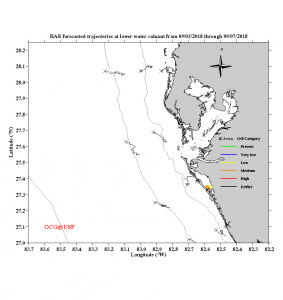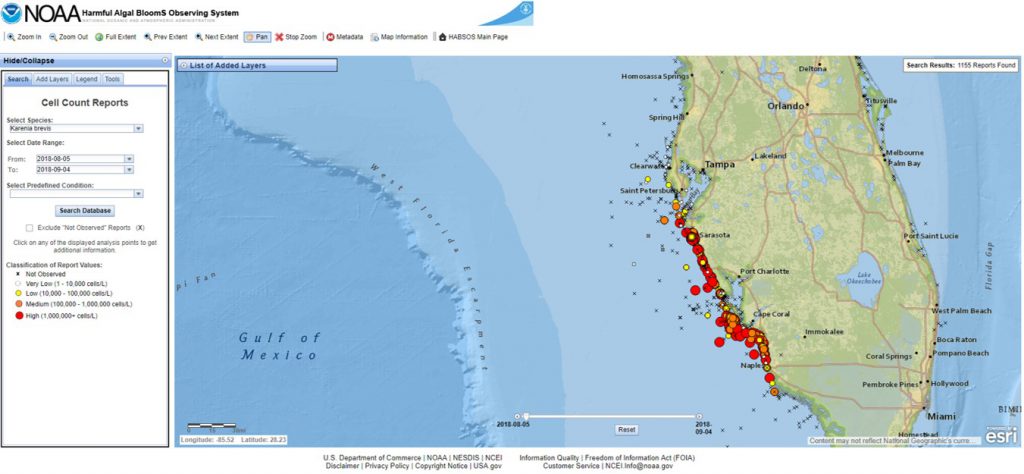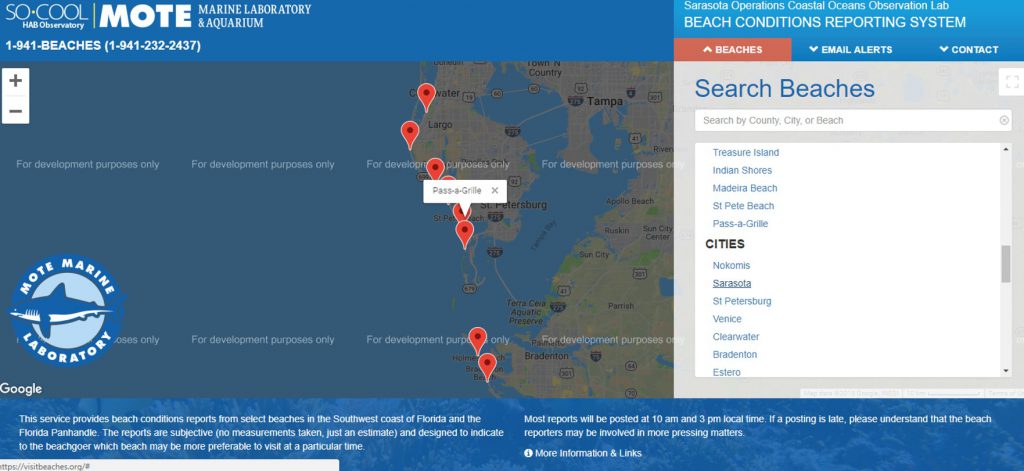For a quick list of helpful links to current red tide status & beach conditions, scroll to the end!
First published September 2018. Last updated August 2020.
The 2018 – 2019 Red Tide bloom stacked up to be one of the worst blooms on record. Extended red tides are devastating for local communities and tough on coastal economies. It is heart-breaking to observe the impact on marine life and working waterfronts. But it is important to remember that severe red tide blooms have happened before, and although it takes some time, the marine ecosystem typically recovers. It can be a helpless feeling to watch something like this take place, but it helps to stay informed and know that there are multiple agencies and a lot of very smart people focused on red tide research, future prediction and potential solutions.
We get a lot of questions about red tide in southwest Florida…especially during bloom periods. A Google search can be overwhelming and many don’t know where to start or how to interpret the results. While this post is not intended to be a comprehensive overview of all red tide research, here are a few of the most informative websites. Bookmark them for easy access to status and forecasting of red tide events.

The Florida Fish and Wildlife Conservation Commission Fish and Wildlife Research Institute has an entire team of scientists dedicated to harmful algal bloom research. In addition, they have a volunteer program that helps provide greater sampling coverage throughout the year. FWC provides regular updates on current red tide status for the state of Florida: myfwc.com/redtidestatus.

FWC also has multiple resources online as related to the biology and history of Florida’s red tide: myfwc.com/research/redtide/faq/. Their scientists have published dozens of papers on this topic and FWRI’s digital library is available for anyone who wants to delve deeper into the science.
Another very useful site is the University of South Florida’s College of Marine Science Ocean Circulation Group, which models the transport of bloom conditions at the surface and at the bottom of the water column. This interactive map allows visitors to click on their area of interest and view the best prediction of where the red tide is headed on the West Florida Shelf: ocgweb.marine.usf.edu/hab_tracking/HAB_trajectories.html. This collaborative effort between USF and FWRI combines the expertise of oceanographers and biologists to provide stakeholders with a relevant and up-to-date idea of what conditions to expect in the near future.
Harmful algal blooms are also tracked at the federal level, and NOAA has multiple sites for red tide information. Cell counts and bloom status reports are available through the Harmful Algal Blooms Observing System (HABSOS) and NOAA also issues twice weekly forecasts that allow us to monitor ongoing harmful algae blooms.

The Gulf of Mexico Coastal Ocean Observing System (GCOOS) recently developed HABscope, a citizen science program dedicated to gathering data from trained volunteers to allow for more robust red tide forecasts.
Mote Marine Lab also has an excellent site dedicated to red tide facts and updates: https://mote.org/news/florida-red-tide.
Red tide is patchy and the beach might be ok one day and not the next. There’s a website dedicated to keeping up with local conditions that you can check before you head out: https://visitbeaches.org

We are lucky to live in a time where so many digital resources are available to keep us informed. That is one small consolation during these devastating blooms. Stay informed and keep tabs on the good science that is out there, which continues to develop and improve our understanding every day.
Quick list of links to current conditions:
FWC current status and daily sample map
Ocean Circulation Group Prediction and Tracking
NOAA Harmful Algal Bloom Conditions Report
Mote HAB Observatory: Local Beach Conditions
Additional resources: Kirkpatrick, B. et al. 2004. Literature Review of Florida Red Tide: Implications for Human Health Effects. Harmful Algae 3: 99 – 115.
Florida Sea Grant. 2018. Understanding Florida’s Red Tide.
Florida Sea Grant. 2019. State of the Science for Harmful Algal Blooms in Florida.
For a wealth of data as related to water resources in Florida, check out wateratlas.org
For a similar blog about cyanobacteria (blue green algae) blooms, check out: Resources for understanding blue-green algae (cyanobacteria) blooms.
 0
0
